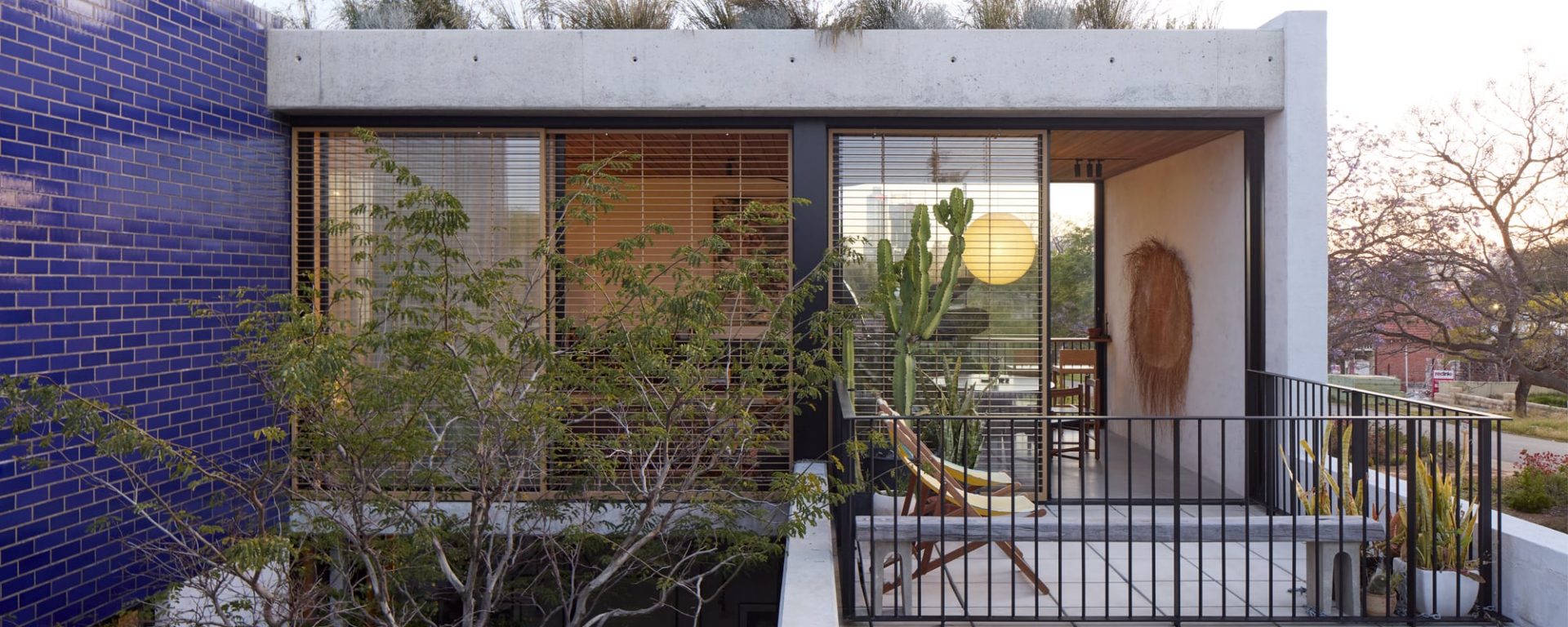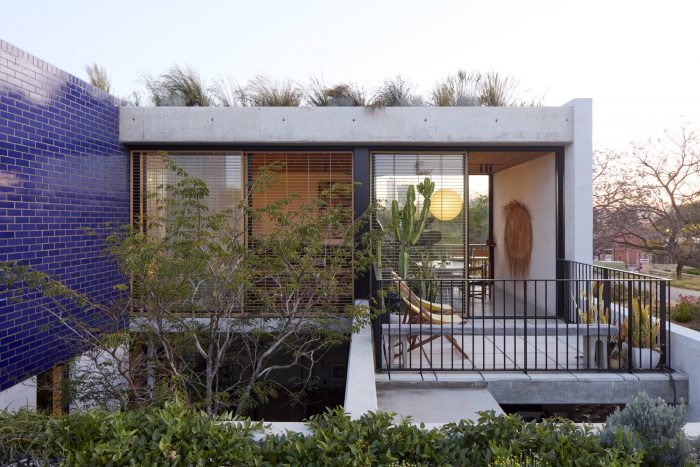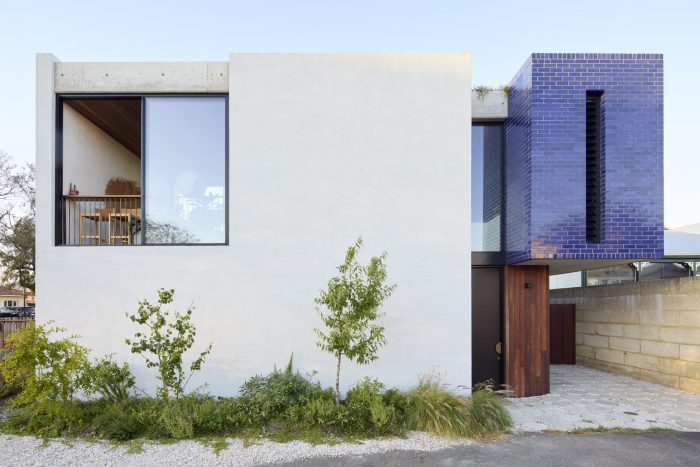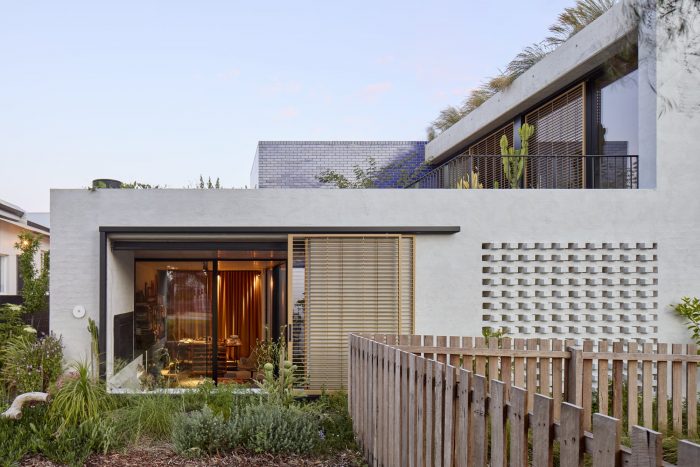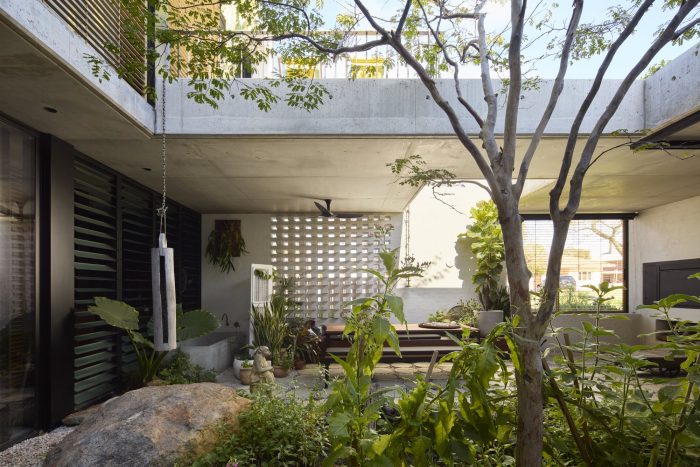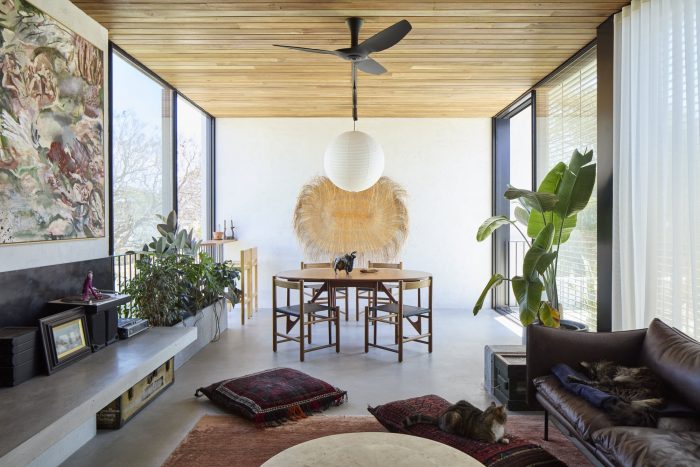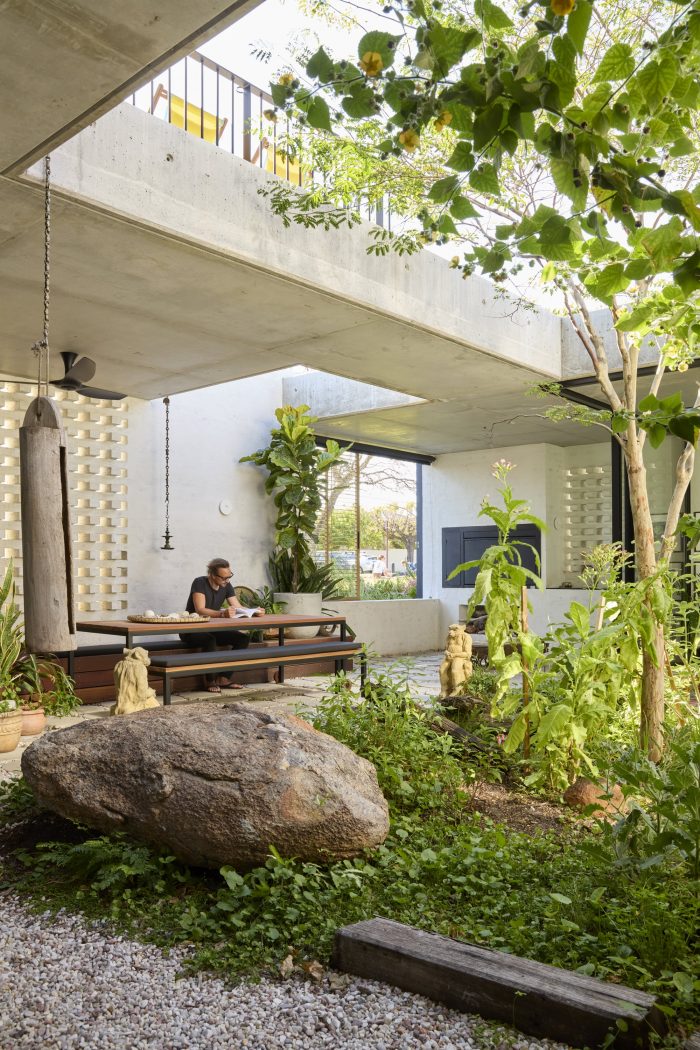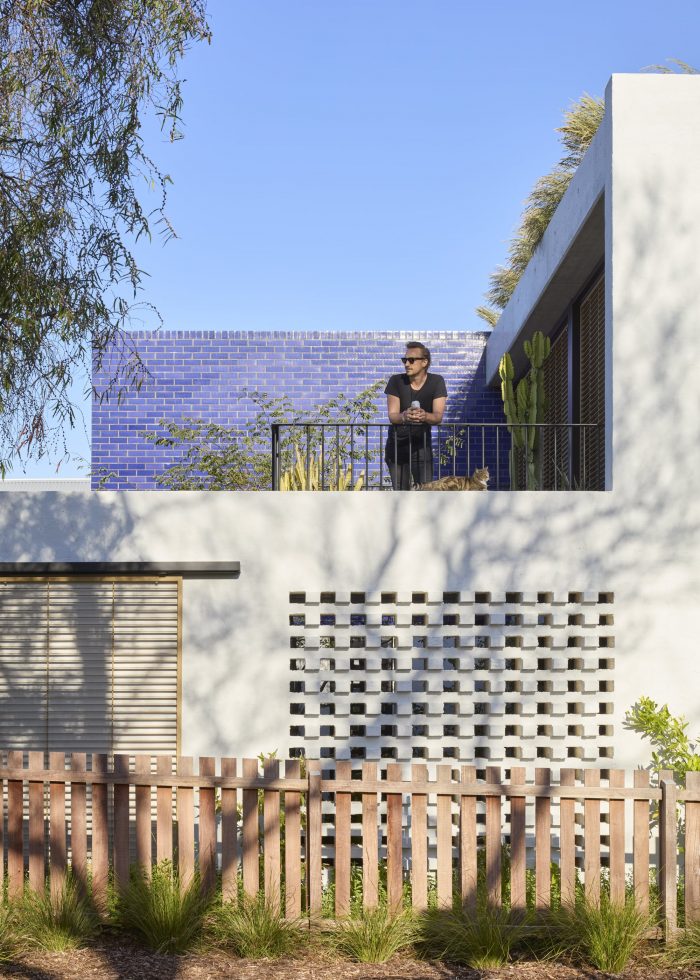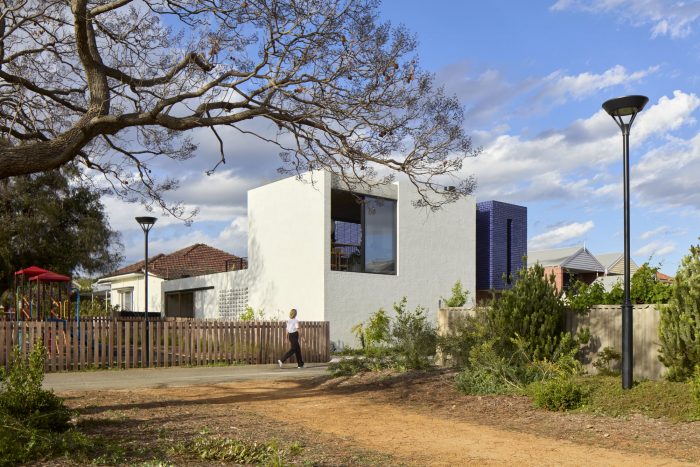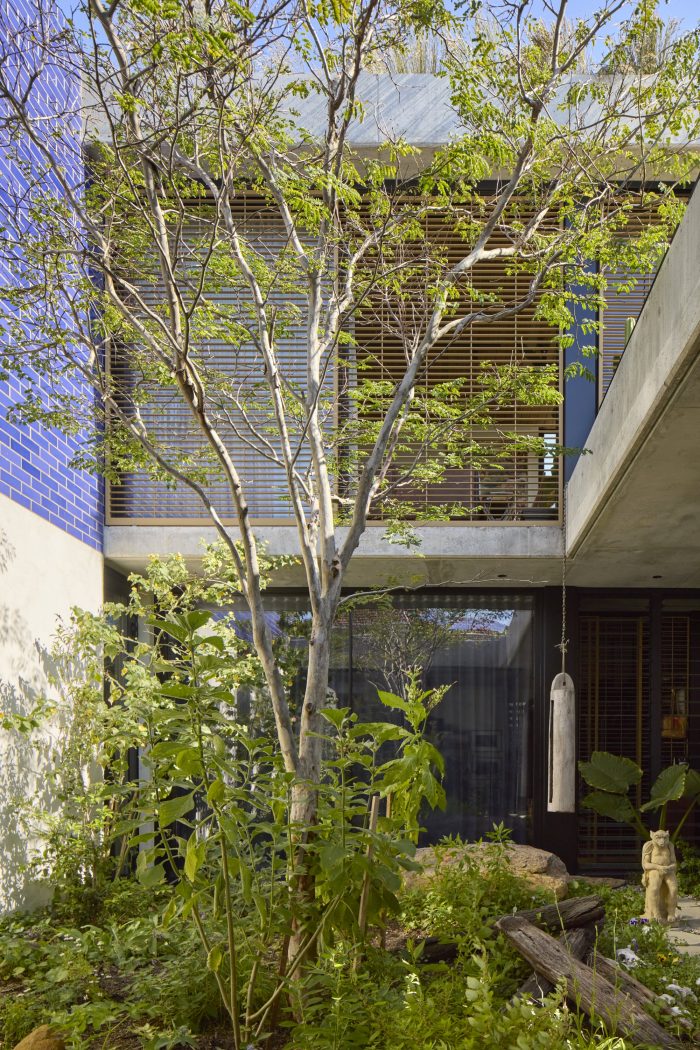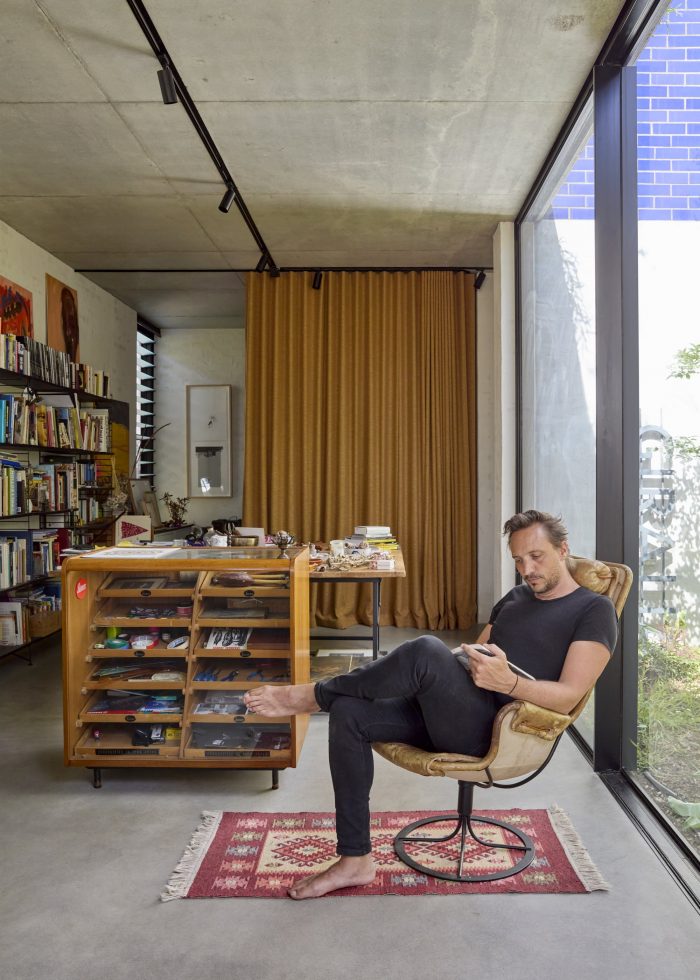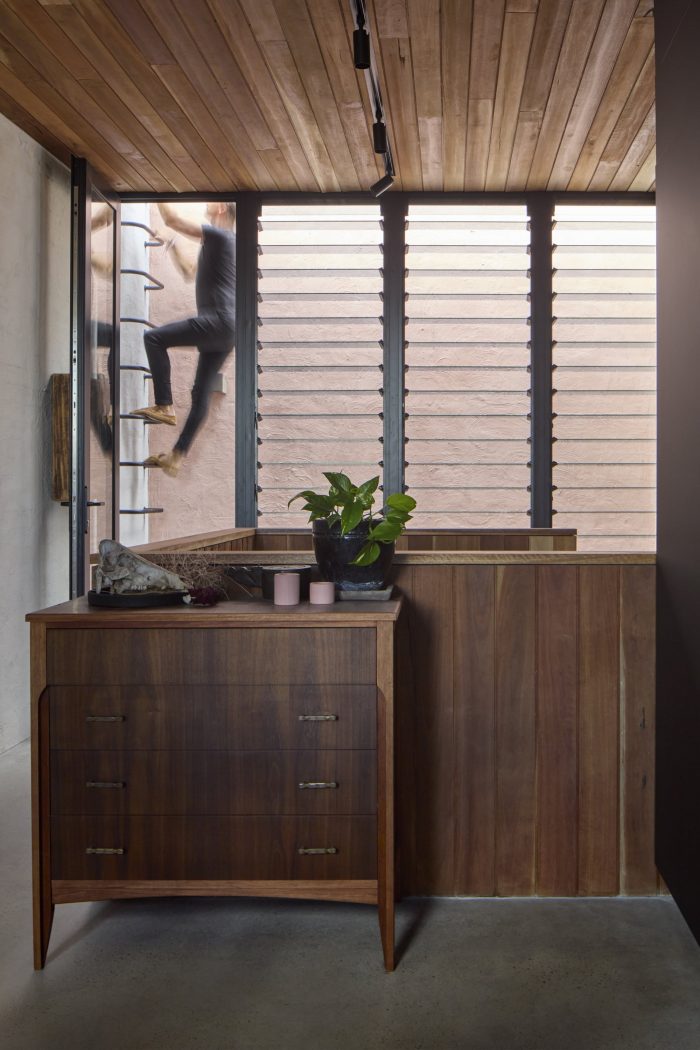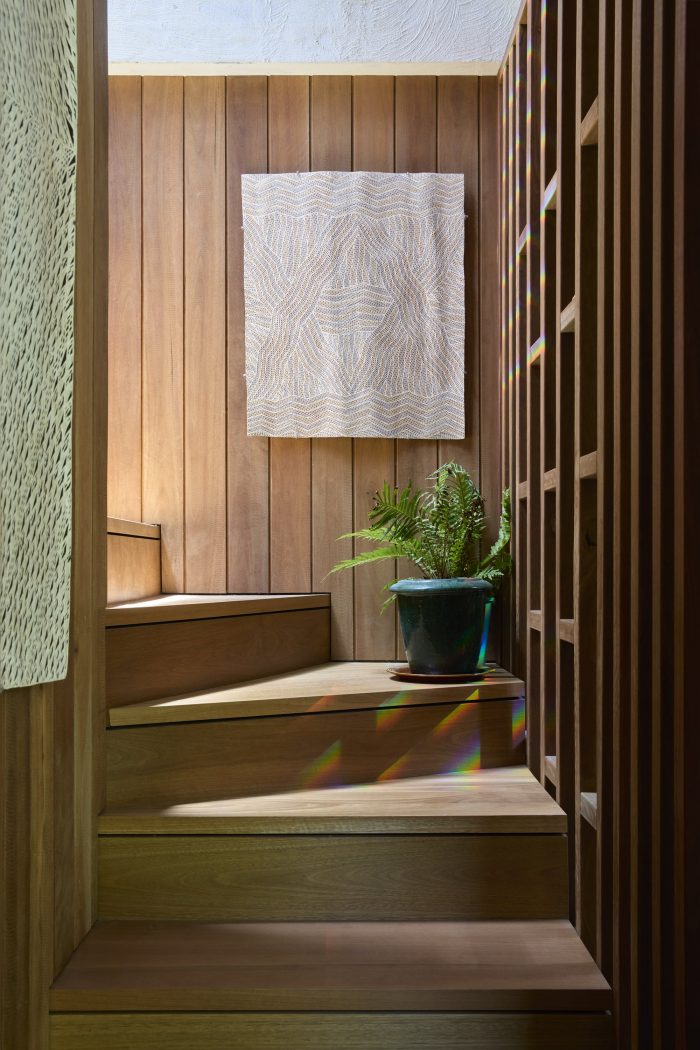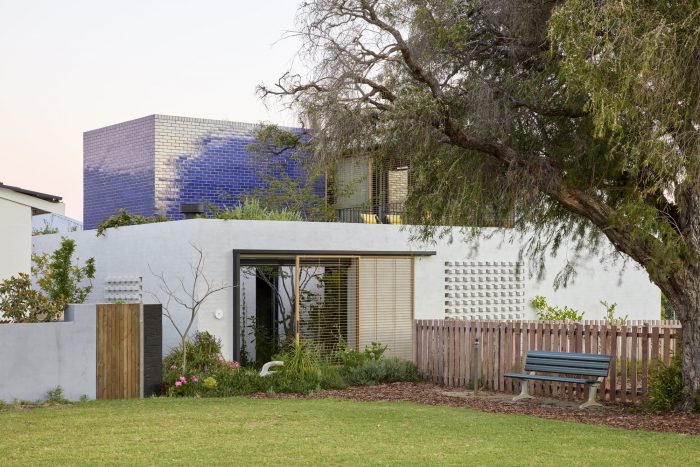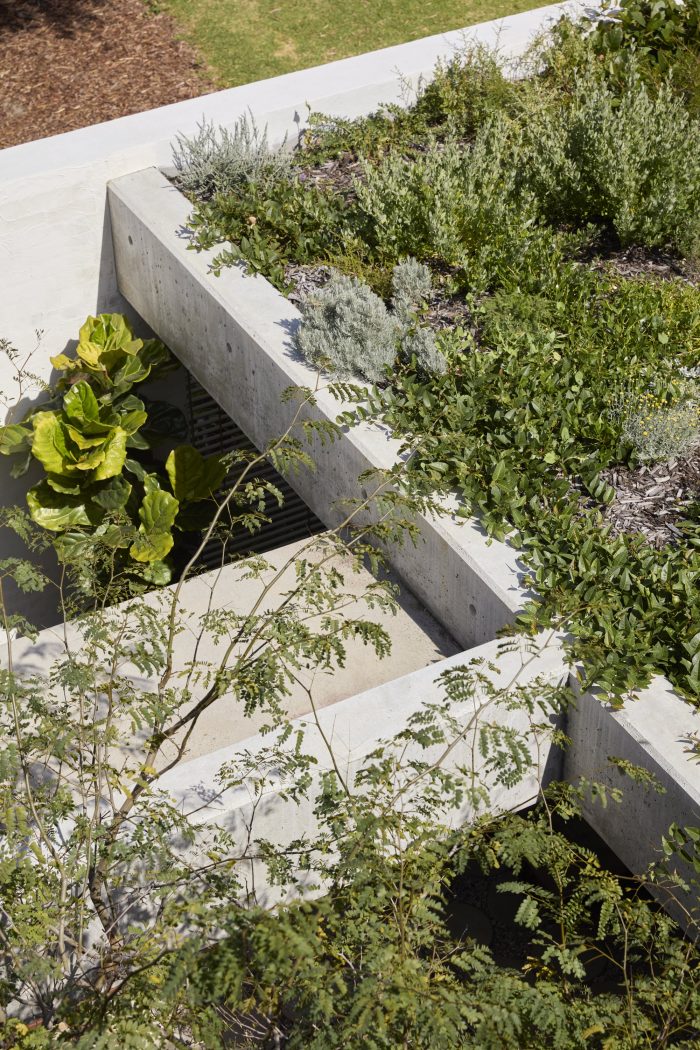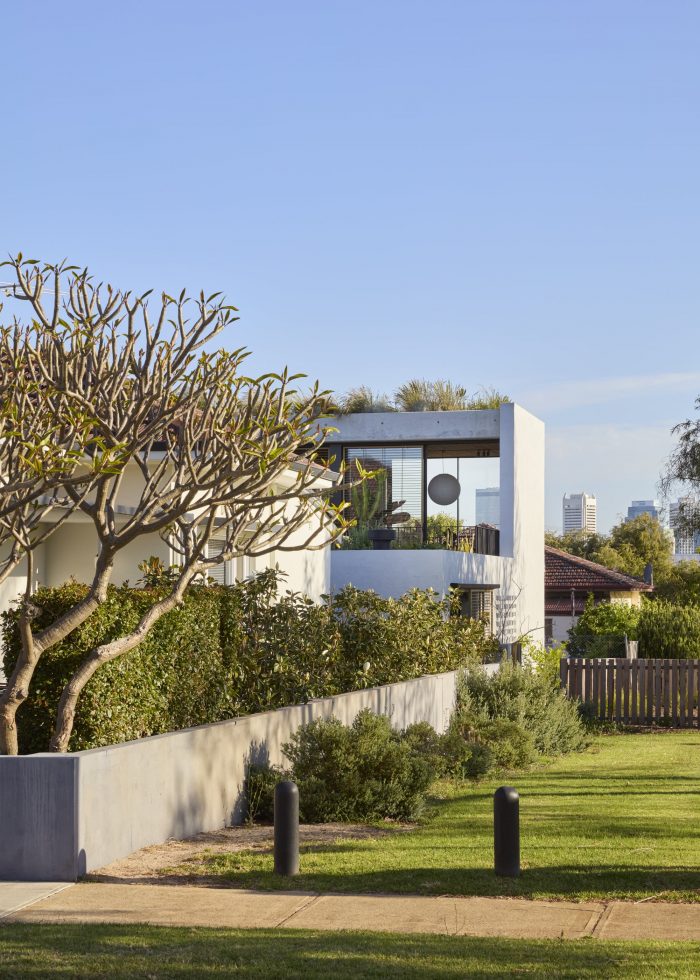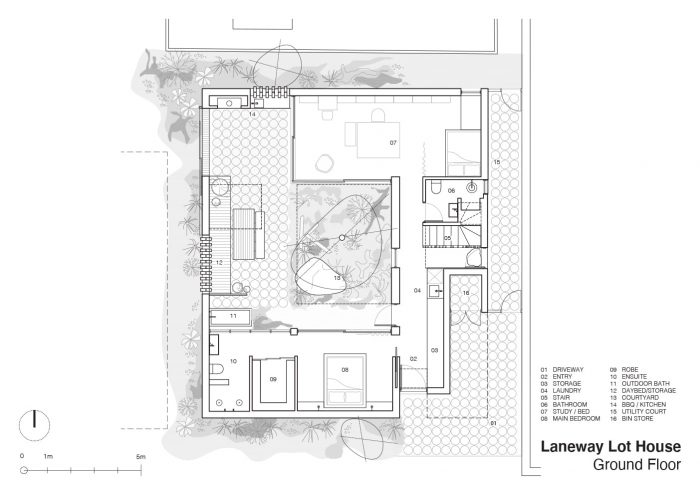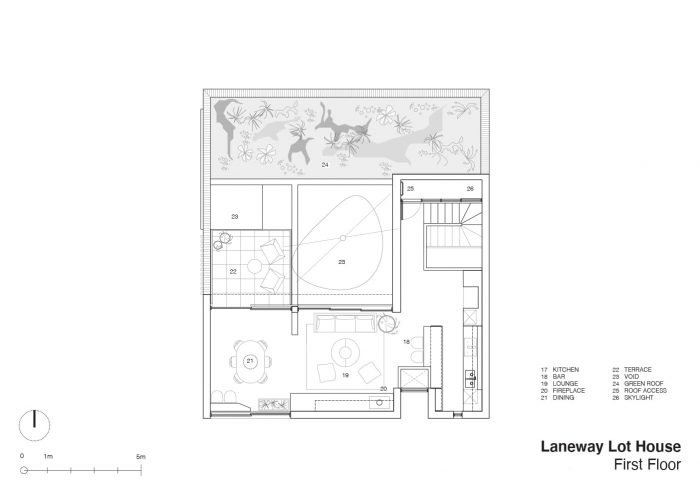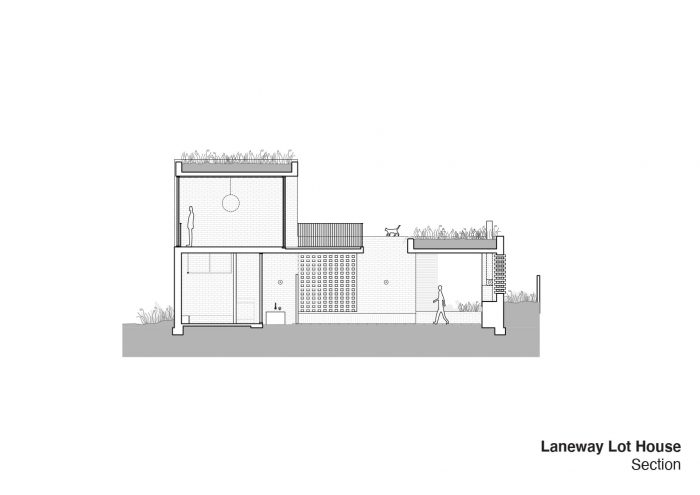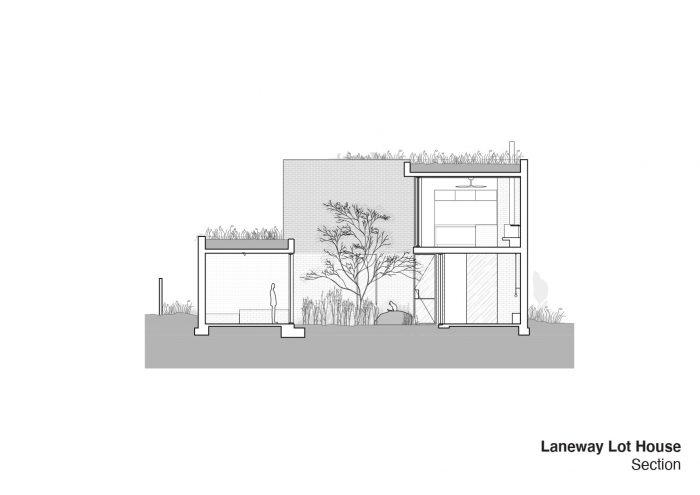我们的实践经常在已建成的郊区进行不同规模的填充项目,在每一个项目中,我们都试图挑战一切照旧的做法。这个项目提供了一个机会来解决 “斧头块 “分区的问题,在这个项目中,人们经常看到用覆盖了大部分场地的建筑来取代以前的后院,几乎没有留下花园的空间,一个定义不清的入口序列忽略了住宅在社区中的存在,以及一个被停车场和坚固的围栏占据的巷道。
Our practice often undertakes infill projects of varying scales within established suburbs and with each project, we seek to challenge the business-as-usual approach. This project provided the opportunity to address the battleaxe block subdivision which too often sees the replacement of an ex-backyard with structures that cover the majority of the site and leave little room for gardens, a poorly defined entry sequence neglecting the home presence in the neighborhood, and a laneway lost to car parking and solid fencing.
我们的任务是为花园和庭院提供比场地本身更多的空间,翻转典型的图示,使巷道成为我们的前门,街道成为我们的后门,同时以派对模式向邻近的公园开放。为了使事情更具挑战性,我们制定了一个规则,即它必须完全符合R代码,并且必须对其邻居很慷慨。
Our brief was to fit more area for gardens and courtyards than the site itself, to flip the typical diagram and make the laneway our front door and the street our back while opening up in party mode to the adjacent park. To make things more challenging we made a rule that it had to be completely compliant with the R-codes and had to be generous to its neighbors.
这个住宅是根据Marshall Clifton和Julius Elischer的作品以及他们为珀斯寻找合适的乡土建筑而设计的,在这种情况下,是围绕一系列季节性花园房间安排的庭院式住宅。粗糙的白色砖块反射了珀斯残酷的太阳的热量,并提供了住宅的围墙,而不需要任何边界围栏。釉面蓝色砖砌体与周围的蓝色瓦片屋顶和庭院类型的异国情调相呼应。回收的斑点胶为这种简单的原材料调色板带来了温暖,这些材料在内部和外部都以同样的形式存在。
This home riffs on the work of Marshall Clifton and Julius Elischer and their search for an appropriate vernacular Architecture for Perth, in this case, a courtyard house arranged around and within a series of seasonal garden rooms. Rough, white-bagged brickwork reflects the heat of Perth’s brutal sun and provides the home’s enclosure, negating any need for boundary fencing. Glazed blue brickwork speaks to the surrounding blue tiled roofs and the exoticism of the courtyard typology. Recycled spotted Gum brings warmth to this simple palette of raw materials that exist in the same form both inside and out.
庭院类型学构成了被动式太阳能设计和可持续性的第一原则方法的基础。北部和西北部为单层建筑,南部和东南部为两层建筑,该建筑群优化了自然光和城市景观的获取,同时在规模上与邻近的现有单层住宅形成了适当的过渡。
The courtyard typology forms the basis for the first principles approach to passive solar design and sustainability. Single storey to North and Northwest, two storey to South and South East, the massing optimizes access to natural light and city views while providing an appropriate transition in scale from the existing single storey home adjacent.
通常情况下,空白的隔热空心砖墙遮挡了东部和西部的阳光照射,而砖砌屏风则欢迎盛行的微风进入院子。向北的开口有屏风,以保护9月下旬至3月下旬的直接阳光照射。所有的空间都是单一深度,允许最佳的自然交叉通风机会,这一策略得到了位于楼梯容积顶部的热烟囱的帮助,在夜间排出热空气。绿色屋顶、双层玻璃、光伏电池,以及回收和 “秒 “材料的使用完善了可持续性的整体方法。
Typically, blank insulated cavity brick walls shield Eastern and Western solar exposure while brickwork screens welcome the prevailing breeze into the courtyard. Openings to North are screened to protect direct solar access between late September and late March. All spaces are single depth allowing for optimal natural cross ventilation opportunities, a strategy aided by a thermal chimney that sits atop the stair volume and vents hot air at night. Green roofs, Double glazing, PV cells, and the use of recycled and ‘seconds’ materials round out a holistic approach to sustainability.
该住宅面积为140平方米,如果需要的话,可以从一个带有宽敞工作室的单卧室住宅过渡到一个3×2的住宅。一个遮阳的卡贝被从底层的巷道中划出,并保持开放,以便在未来重新规划。该项目超出了设计大纲的要求,通过授权批准,无需提交议会,在256平方米的土地上实现了277平方米的花园和开放空间,并因其与现有建筑、巷道和公园的互动方式而受到邻居和当地社区的赞赏。
The home is 140m2 and has been designed to transition from a 1 bedroom home with a generous studio to a 3×2 in the future if required. A shaded carbay is carved away from the ground floor laneway mass and left open to allow reprogramming in the future. This project has exceeded the brief requirements, approved via delegated authority without the need of going to the council it achieves 277m2 of gardens and open space on the 256m2 lot and is appreciated by its neighbors and the local community for the way it interacts with existing structures, the laneway, and the Park.
Architects: MJA Studio
Area : 185 m²
Year : 2021
Photographs :Jack Lovel
Interior Design : IOTA Interior Architecture
Lead Designer : Jimmy Thompson
Documentation : Sally Weerts
Interior Designer : Amy McDonnell
Country : Australia

